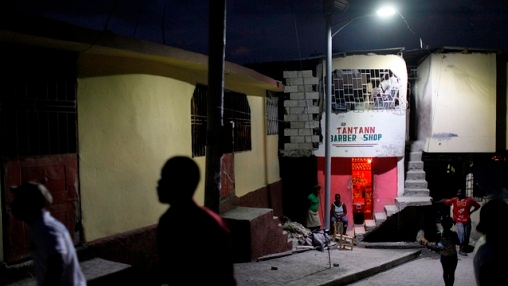Challenge
A troubled past, persistent weak governance and civil unrest have resulted in staggering poverty rates in Haiti, very poor access to basic services, and low human development indicators. Data availability in the country has been limited due to scarce resources and low capacity in the Haitian Institute of Statistics. As a result, knowledge on living conditions in the country has traditionally been limited. The only poverty rates available in Haiti date back to 2001 when poverty was measured using income and international poverty lines. However, income is widely recognized as a less optimal tool to capture welfare in a context like Haiti.
Solution
In the aftermath of the 2010 earthquake, Haiti sought to conduct a living conditions survey. While part of the sampling work was already finalized by 2010, the survey preparation was delayed due to the disruption of the natural disaster and low capacity of the Government.
In February 2012 a new team, supported by the World Bank, took over survey preparations and successfully fielded the survey six months later. Less than a year later, the data was available for data cleaning and the quality was found to be very high, with only a 1.4% non-response rate.
This success can be contributed to quality preparatory work, which was supported by World Bank technical assistance to the Government throughout the activity, as well as to the adoption of an innovative use of tablets (instead of normal paper questionnaires) in the survey process.
Results
The survey in general and the consumption data in particular will allow the establishment of a national poverty line for the country, and a series of baseline indicators to monitor poverty and shared prosperity in the future. The survey has quickly become one of the building blocks of the new poverty monitoring system for Haiti, which in turn is going to become a powerful evidence-based tool for policy-making.
Furthermore, the activity was implemented in close collaboration with the Haitian Institute of Statistics. The Institute benefitted from significant technical assistance in survey design and management, including the use of new data entry techniques.
Bank Group Contribution
The survey cost almost US$1.7 million to implement. The activity benefitted from several sources of financing including: US$400,000 from the Spanish Fund for Latin America and the Caribbean (SFLAC), which financed the technical assistance involved in the preparatory phase of the survey; US$850,000 from the World Bank’s Infrastructure and Institutions Emergency Recovery Project, which financed most of the survey costs; and US$463,000 from World Bank budget.
Partners
Successful survey completion was the result of a partnership among three institutions: the Haitian Institute of Statistics (IHSI), the World Bank and DIAL, a French public research center. DIAL additionally contributed US$180,000 to the survey.
Moving Forward
The next steps to the survey have already been initiated:
1) a second wave of the survey was fielded 8 months after the initial wave;
2) a national poverty line was developed with the Government of Haiti using the data
3) a multi-sectorial poverty assessment was launched based on the new evidence and is scheduled to be delivered in 2015/16.
Beneficiaries
The direct beneficiary of this project was the IHSI, which benefited from extensive technical assistance and the reliable data resulting from this survey. By extension, the Haitian Government will benefit from this activity, as decision makers will be able to base their policies on sound evidence. Finally, in the long term the people of Haiti will benefit from this activity, particularly if it contributes to a new culture of monitoring and evaluation and evidence-based policy making.
